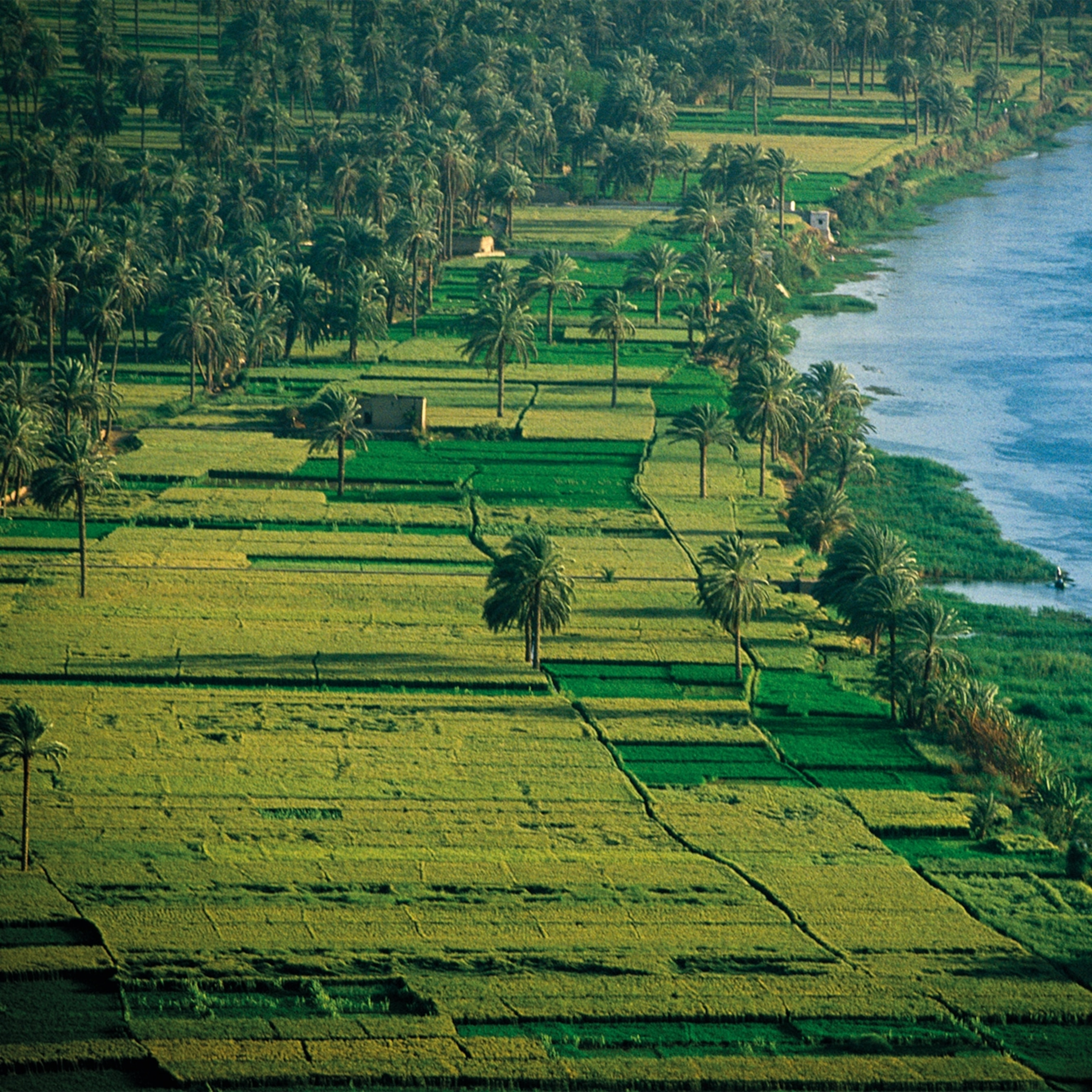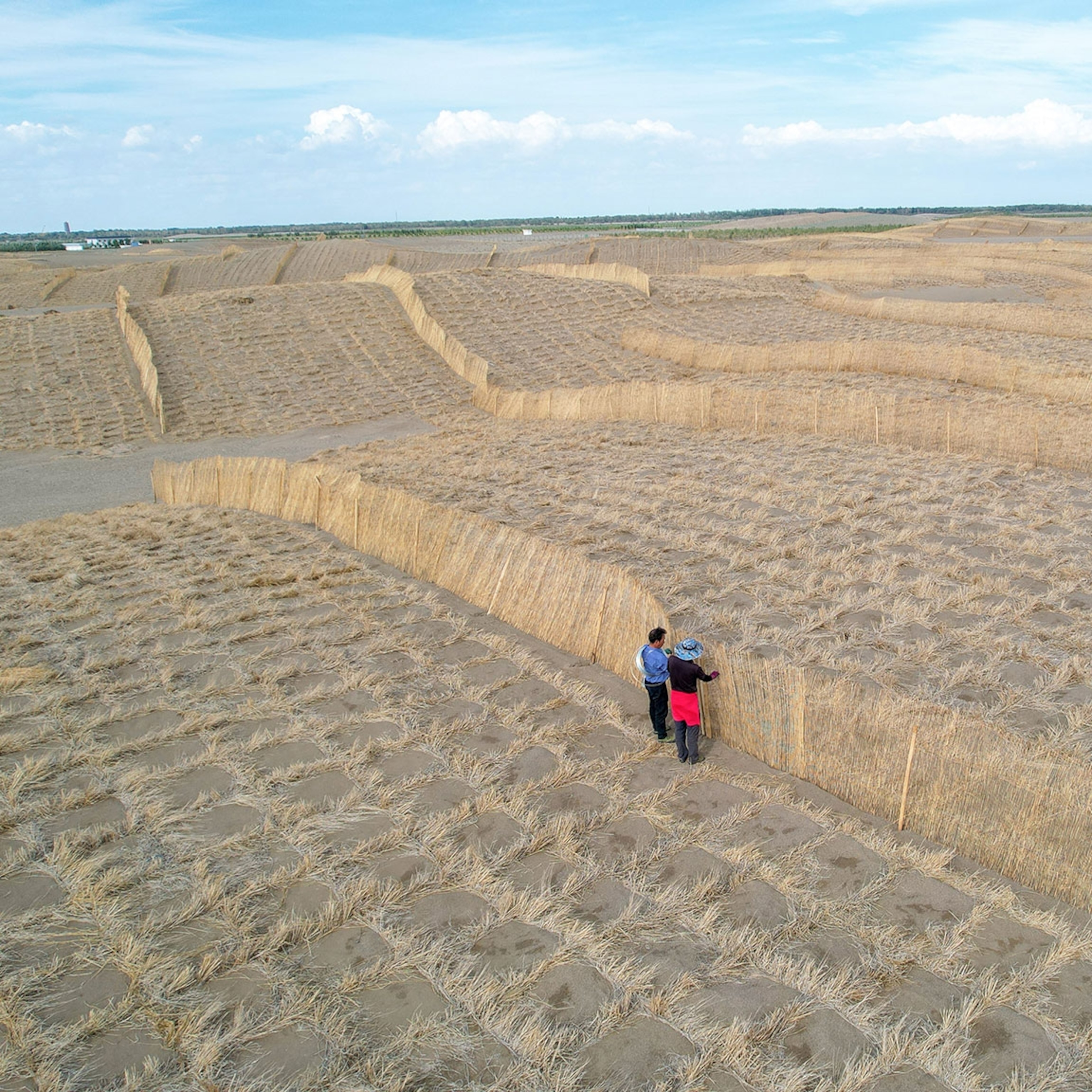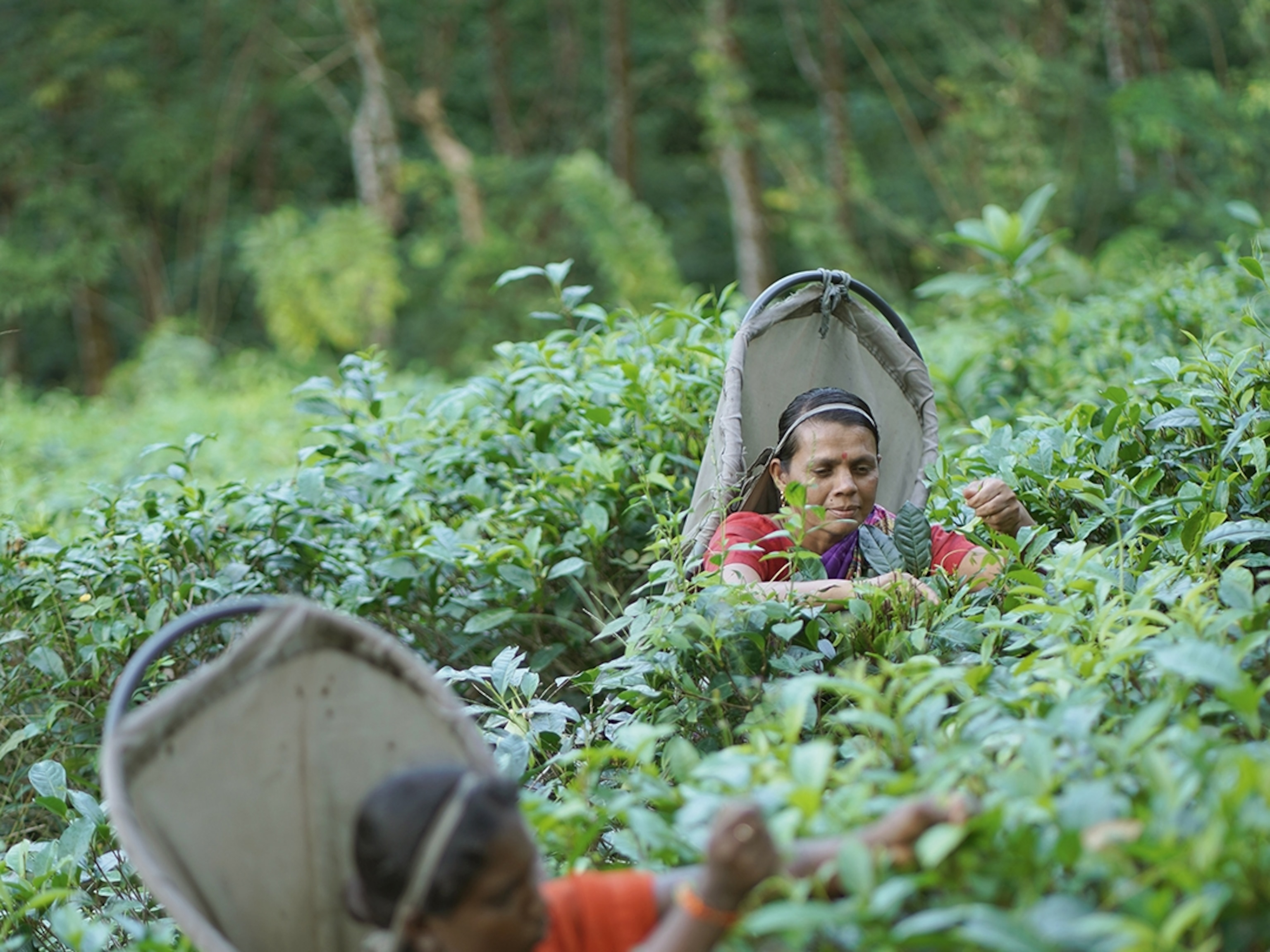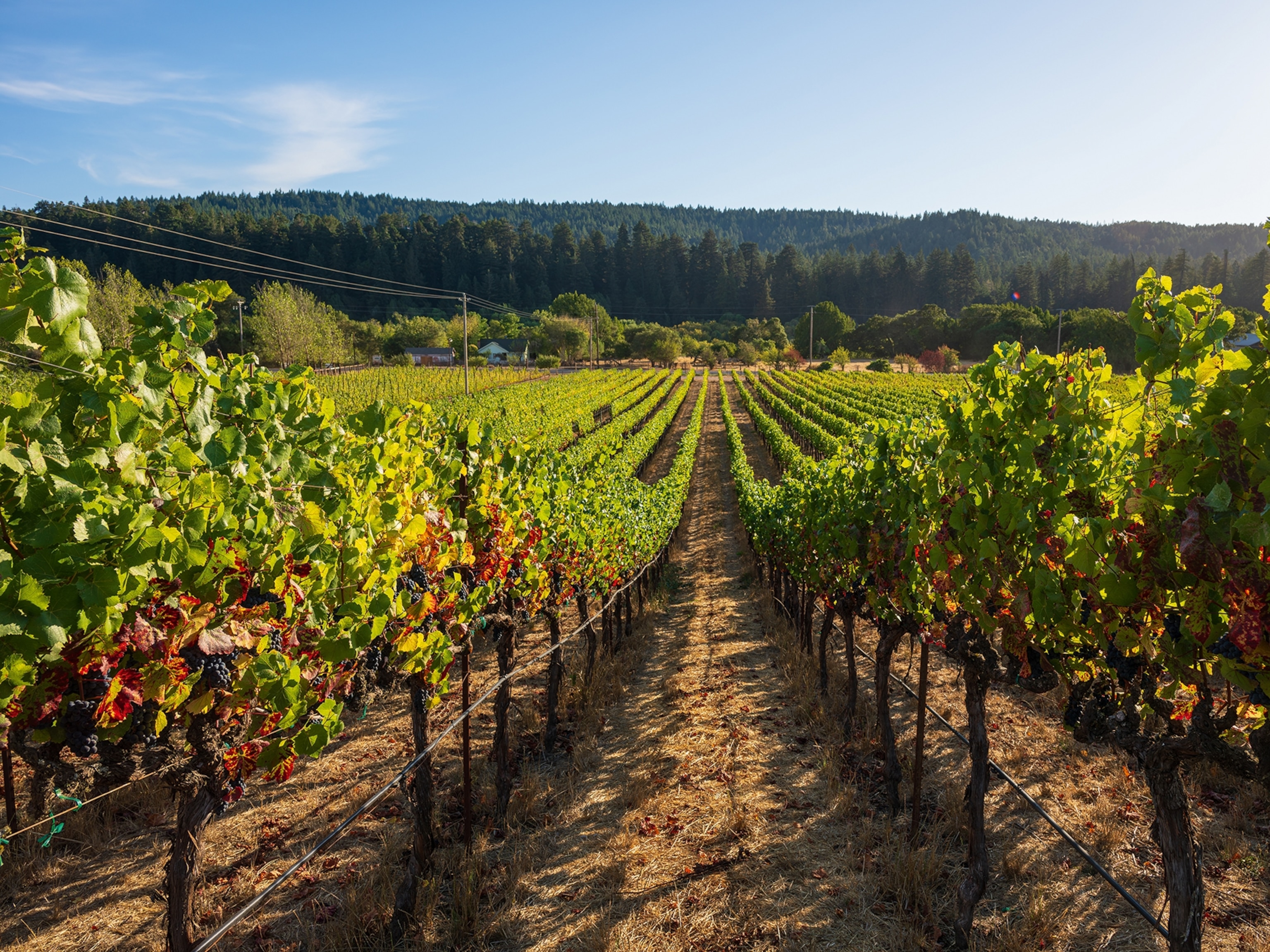
Exporting the Colorado River to Asia, Through Hay
As the West suffers long-term drought, experts look for ways to save water while still supporting local farmers.
In July in Yuma County, Arizona, Dave Sharp's alfalfa crops, like every other living thing in the 105°F (40°C), dry desert heat, get thirsty.
All that keeps them alive, and indeed keeps these fields and the hundreds of thousands of acres surrounding them in Yuma County from going fallow, is the Colorado River, diverted one last time through the Yuma Project before flowing across the border into Mexico.
The same can be said of California's Imperial Valley, across the river and about 60 miles (97 kilometers) to the west, which was essentially uninhabitable before the Imperial Canal first drew Colorado River water there in 1901, and then the All-American Canal brought more in 1940.
These complex irrigation systems, through an even more complex system of laws, treaties, compacts, court orders, and agreements drawn up over the past century, deliver a very specific volume of water to the hundreds of farms throughout Yuma County and the Imperial Valley.
Sharp and his brother, third-generation Arizona farmers, count themselves among the lucky rights holders of some Colorado River water, which they use to irrigate their Lyreedale Farm. Every few weeks, they release a carefully calculated bit of their allotment of the Colorado over their 2,400 acres.
Half of Lyreedale's fields are planted with alfalfa, a legume that most people recognize as a type of hay. There are actually dozens of varieties of hay, including grasses, but alfalfa is one of the most popular. Alfalfa is a livestock forage crop that is most often fed to dairy cows. It has deep taproots that suck up water, although scorching summer heat kicks transpiration into overdrive.
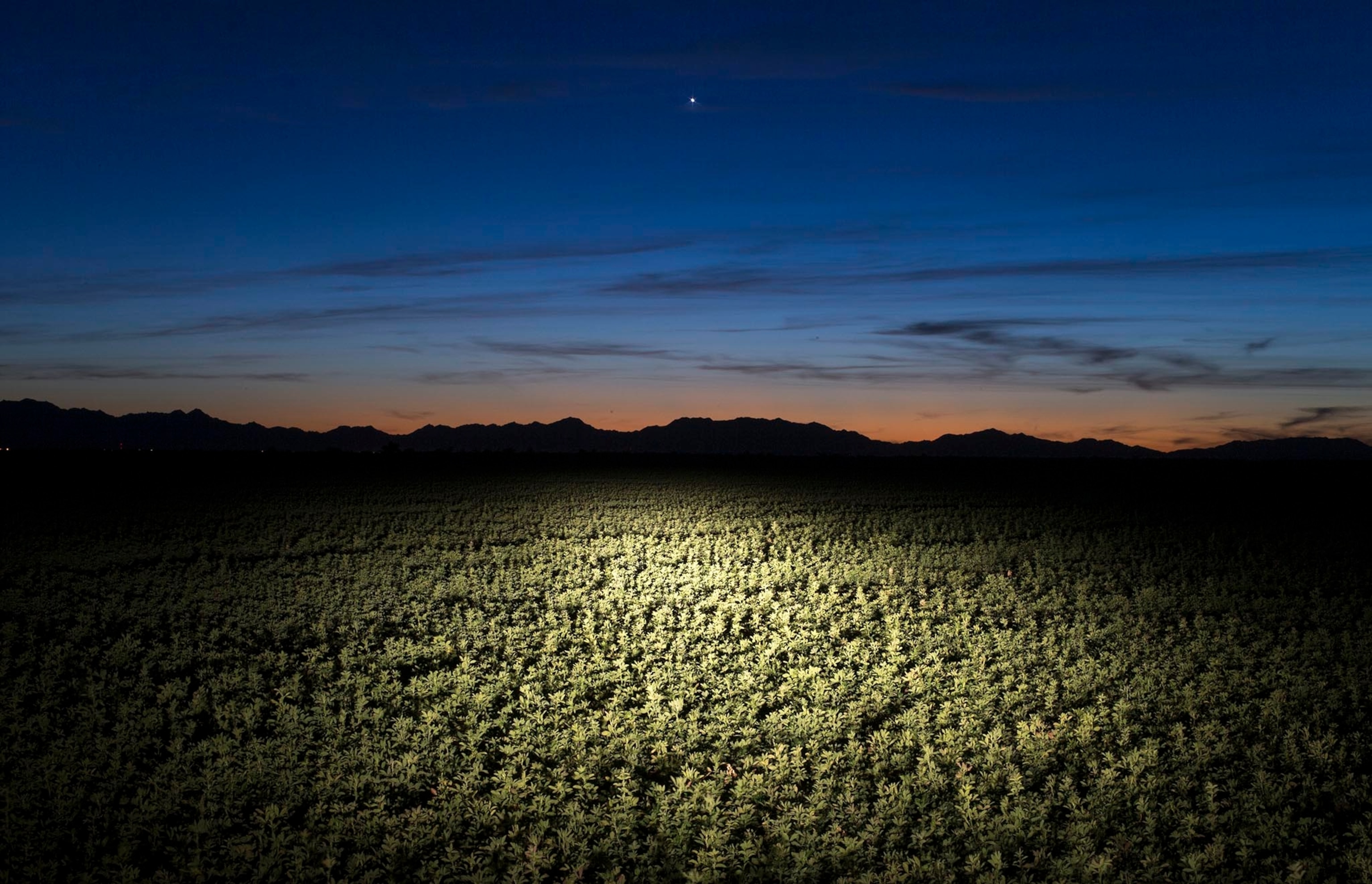
Alfalfa grows fast, so every month or so, a harvester will cut the crop, which will then be packed into tight bales; trucked to Long Beach, California; and loaded on a tanker bound for China or Japan or the United Arab Emirates.
All across the lower Colorado River Basin—and especially in Yuma County, the Imperial Valley, and the Green River area in Utah—scenes like this are playing out with increasing regularity. What was once a reliable and local, if relatively low-value, crop has become a global commodity. But the fact that the Colorado River is fueling the export boom has some western water advocates worried.
Virtual Water Exports
When Robert Glennon, a water policy expert at the University of Arizona and author of the book Unquenchable: America's Water Crisis and What to Do About It, first learned that the U.S. was exporting alfalfa crops that had been grown with the very limited western irrigation water, his reaction was "utter disbelief."
Glennon crunched some numbers and figured that in 2012, roughly 50 billion gallons of western water—enough to supply the annual household needs of half a million families—were exported to China. Not literally bottled up and shipped, but embedded in alfalfa crops grown with irrigation water. And that's just to China, which still trails Japan and the United Arab Emirates as a top destination for American alfalfa.
(Use this tool to see how much water is embedded in various farm products.)
The concept of exporting "virtual water" is not new. And for decades the United States has exported trillions of gallons of it.
According to a UNESCO-IHE Institute for Water Education report published in 2011, the United States exports more than twice as much virtual water, about 82 trillion gallons, as any other country. That's largely because American farms feed the whole world.
Of course, given all the foreign products that Americans buy, the United States is also the largest importer of virtual water, with roughly 62 trillion gallons coming into the country in the form of T-shirts and iPods and other products.
"We get a lot of criticism for how much water is going overseas in the form of alfalfa," said Sharp, the Arizona farmer, "but alfalfa is exported far less than wheat or rice."
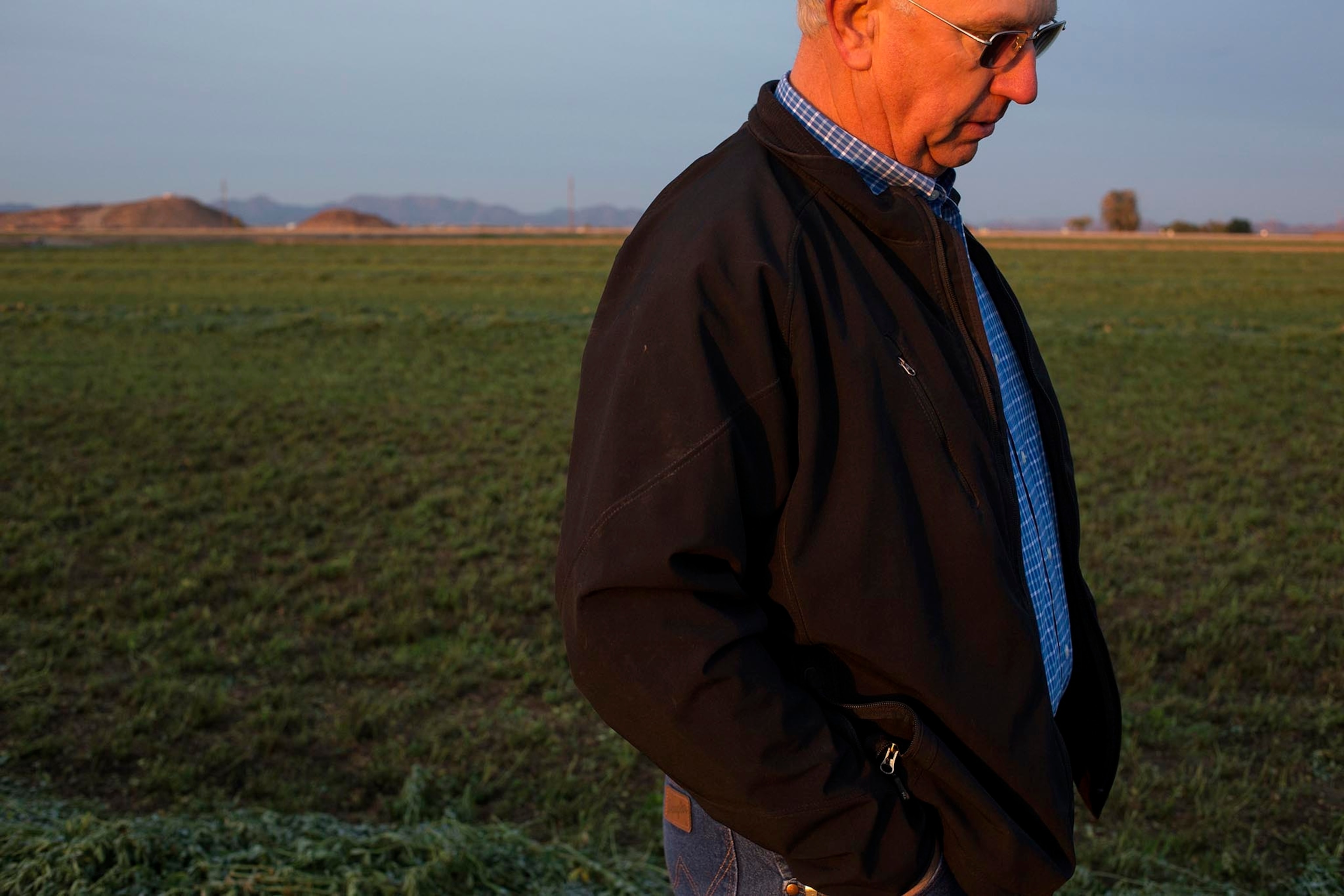
Glennon agrees. "We do it in the form of wheat, soybeans, and corn," he said. "The midsection of the country has traditionally used millions of tons of water to grow crops that are shipped by rail to ports and shipped all over the world."
But what troubles Glennon, and others who obsess over the West's water woes, is the growing trend of shipping hay overseas. "What's new here is that hay is a forage crop, and the exports are coming from the West, where water is scarce."
Daniel Putnam is quick to defend alfalfa and other forage crops, which he studies carefully as an agronomist at the University of California, Davis's College of Agricultural and Environmental Sciences. "Alfalfa has become a whipping boy because people don't understand it, and undervalue it," said Putnam. Alfalfa may sell for cheap, he said, but people don't consider the value it provides by supporting the local dairy industry; by supplying a regular, year-round income as a "cash crop" for farmers; and by contributing to wildlife, since alfalfa fields are favored by migratory birds.
"People like to pick on alfalfa," said Putnam, "yet it receives no subsidies at all, has low sales value, but is still the largest acreage crop in California and Arizona. So how does it survive? It supports the biggest industry in California, which is dairy."
Critics argue that the water itself, available to farmers at a fraction of true market value, is a form of indirect subsidy.
Alfalfa Exports
Alfalfa's image problem also stems from the fact that exports of the highly irrigated crop are growing fast at a time when persistent drought has put the West's water struggles front and center in the public consciousness.
These exports are a relatively new phenomenon. For centuries, according to Putnam, hay was typically fed to cows close to where it was cut. What changed?
First, explains Putnam, is that demand for dairy is growing in the Middle East and much of Asia, particularly China, and these countries either can't or choose not to irrigate water to grow hay. Putnam points to a 2008 decision in the United Arab Emirates that the nation would not use its very limited water supply to grow forage crops like alfalfa.
Japan, with established dairy demand and little land to produce hay, has been the largest importer of alfalfa from the U.S. for decades, but China and the United Arab Emirates are fast gaining ground.
On top of the demand spike, a staggering trade imbalance between China and the U.S. creates an incredible advantage for any American producer to ship anything at all to China, even bulky, heavy bales of hay. For every two container ships that bring those iPods and T-shirts to California ports from China, one goes back empty.
As a result, "it costs less today to ship a ton of alfalfa from Long Beach to Beijing than it does to ship it from the Imperial Valley in California to the Central Valley," explains Glennon.
All of this leads to alfalfa and hay exports that have more than doubled since 1999 and increased by 60 percent since 2007, with the biggest increases by far being in shipments to China and the United Arab Emirates. For instance, in 2007, China imported just 2,400 metric tons of hay. By 2012, that had increased over 200 times to more than 485,000 metric tons. And in a paper Putnam presented earlier this month, he predicts another 50 percent growth over the previous year's volume in 2013.
Putnam also anticipates that Saudi Arabia will soon, like the U.A.E., restrict alfalfa growth, which would cause another big spike in overseas demand.
Today, at least 12.5 percent of alfalfa grown in western states is exported, and in some areas like California's Imperial Valley—just across the Colorado River from Yuma County—that figure grows to a full 50 percent.
Alfalfa and Water on the Farm
Nowhere is the complicated—and increasingly controversial—relationship between a limited water supply and rising hay exports more relevant than in the Lower Colorado River Basin, particularly the fertile fields of the Imperial Valley and Yuma County.
Every day, the Sharp brothers make careful, cautious decisions about how to best use their limited supply of the Colorado River.
"We have a very vital resource that has been entrusted to us, and we are stewards of it," says Sharp. "We know what can happen, that things are cyclical, that it can come and go."
Alfalfa, he explains, is part of a regular rotation on his fields that responds to the seasons and helps sustain the soils.
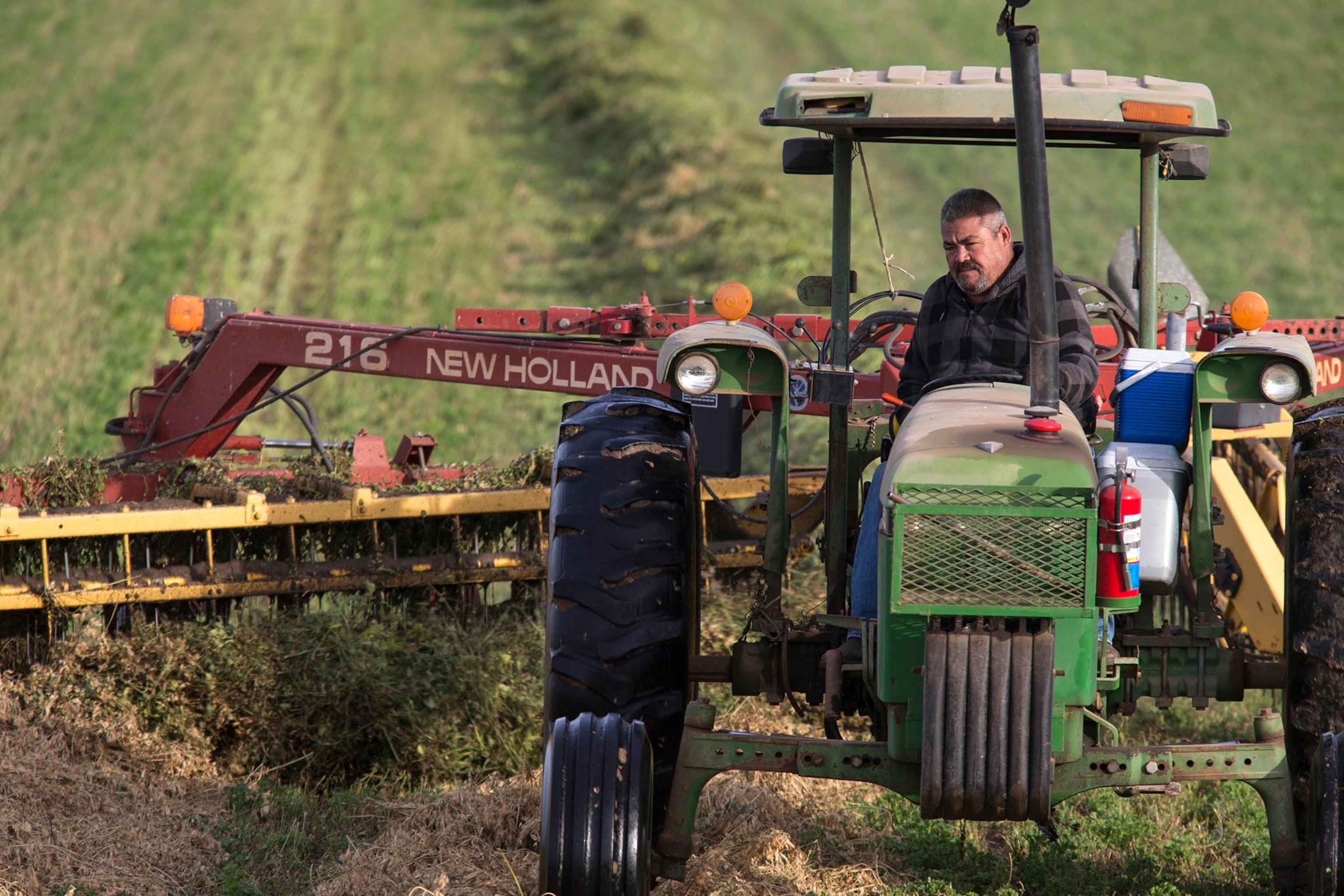
"Over 90 percent of produce consumed in winter months in the U.S. comes from Yuma," said Sharp, a staggering figure that was confirmed by Putnam. And though Sharp could make a lot more profit selling high-value produce, "we can't grow lettuce [all the time]. Diseases would wipe us out. We have to do rotation, and alfalfa is a key rotation crop."
Sharp added that he typically rotates in alfalfa on a field every three years. And when it comes time to move the finished crop, Sharp emphasizes that exports are just a small part of the picture. "There's lots of demand for alfalfa in Arizona and California from dairies and feedlots," he said.
"We're businessmen first, so we look for the best market and what will generate the most revenue," Sharp added. "There are times of year when it's most advantageous for us to sell to local dairies. And there are times of year when it's most advantageous to us to go to export."
However, elsewhere in Yuma, and particularly in the Imperial Valley, the export of alfalfa is becoming a business unto itself. Some large-scale industrialized hay operations have sprung up in recent years, with foreign markets at the core of the business model.
Solutions?
For his part, Glennon has no problem at all with an alfalfa crop that feeds into a higher-value domestic industry like dairy. And he is quick to point out that farmers, whom he calls "savvy business people who take advantage of commodity price spikes and shipping prices," shouldn't bear the brunt of any criticism for what is essentially a policy problem.
"I'm not villainizing farmers or alfalfa," says Glennon. "But I want to expand the market for people who have the rights to this water to sell it."
He has some ideas for how to create a better alternative for farmers than exporting hay and all the water used to produce it.
One fix, though not at all an easy one to implement, would be to rework the laws and restrictions that discourage or even prohibit farmers from selling or leasing their rights to irrigation water.
"The Imperial Valley uses Colorado River water," explains Glennon. "Las Vegas and the Southern Nevada Water Authority would pay dearly for a small percentage of the water used to grow that alfalfa, and that deal is all but impossible to pull off."
When growers hear talk of expanding water markets, they immediately fear the outright loss of their rights. According to Sharp, the Yuma Irrigation District holds the primary rights, and his family's contract is with the district. If the district were allowed to negotiate sales with municipalities, it could in theory sell the Sharps' allotment—along with all his neighbors' in Yuma—to, say, the city of Phoenix, which could pay more than the farmers ever could.
"San Diego, Phoenix, and Las Vegas can all pay more for water than any agricultural operation could ever compete with," warns Putnam. "When you start to talk about markets allocating water, you have to ask some hard questions. Do you really want to dry up the Imperial Valley?"
Glennon insists that the right policies could protect farmers and keep places like Yuma and the Imperial Valley wet and productive, without sending Colorado River water overseas.
He points to research done by Mike Ottman of the University of Arizona, which shows that alfalfa farmers are actually getting less product in the summer months for the same amount of water spent.
Ottman explains that the typical alfalfa farms in the Southwest have eight cuttings, or harvests, a year, and that the last four of these, during the scorching summer months, yield about half as much product. But alfalfa is incredibly resilient, and the perennial crop survives just fine if it isn't watered for a few months. Putnam has researched this practice, as well as so-called "deficit irrigation"—where the crops get less water than they'd need for maximum growth—and the crops fare just fine in the long term after a dry spell.
This has Glennon thinking of some creative conservation and efficiency solutions. "There's a lot of water being wasted growing alfalfa in the summer," he said. "The farmers do it because they don't have anything else to do with the water, and because they fear they'll lose their rights to it if they don't keep using it. That's a rule that could be changed."
Glennon proposes a "temporary suspension of summertime irrigation of alfalfa," combined with changes in policy that would encourage farmers to sell limited volumes of their righted water to the highest bidder, probably cities or industries.
The legal trick is ensuring that farmers don't lose their rights if they don't use their water and lease it out instead. In theory, the Sharp brothers could let their alfalfa fields go dormant for the summer months, after harvesting the first four cuttings during the wetter part of the year. They would miss out on the four summer cuttings, but they could make more than enough money to compensate for that by selling their water to Phoenix or Las Vegas or a company like Intel. If they ever decided they wanted to use all their allotted water on the farm again, they'd be welcome to do it.
Glennon is confident that opening up the water market would effectively curtail exports; no ban or change in trade policy would be necessary.
"It's really a win-win," says Glennon. Farmers stay in business and make their own decisions about which fields to leave fallow and which to harvest. Growers could even use the new water revenue to pay for more efficient irrigation systems, thereby saving even more water, the rights for which could be leased. "They grow as much product as they already do, with less water, and infrastructure improvements on the farm are paid for by the municipal and industrial sector," he said.
Glennon adds that this is just one idea, and that there are many smart policy shifts that would allow farmers to keep their water rights, make more money, and keep the Colorado River doing more productive work within the United States. "The only thing that limits us is our imagination," he says.
To get involved in helping restore the Colorado River Basin, join Change the Course, a campaign from National Geographic, Participant Media, and the Bonneville Environmental Foundation. (You can also text "River" to 77177. Don't worry, it won't cost you anything.)
Funding for this article was generously provided by the Walton Family Foundation.

